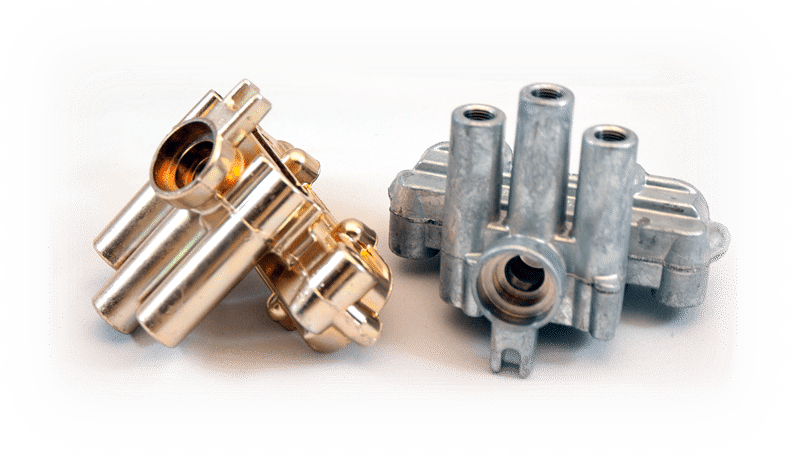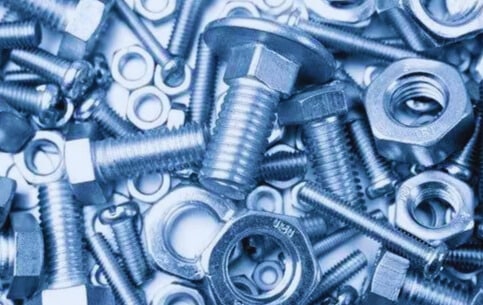As metal fabrication and manufacturing continue to advance, the process of cutting metal has become increasingly sophisticated. There are now several types of metal cutting processes available, each with their own unique features and benefits. In this article, we will explore 5 different types of metal cutting processes in detail, including Laser Cutting, Fibre Laser Cutting, Oxy-Fuel or Flame Cutting, Plasma Cutting, and Waterjet Cutting.
What are the Types of Metal Cutting Processes?
Laser Cutting
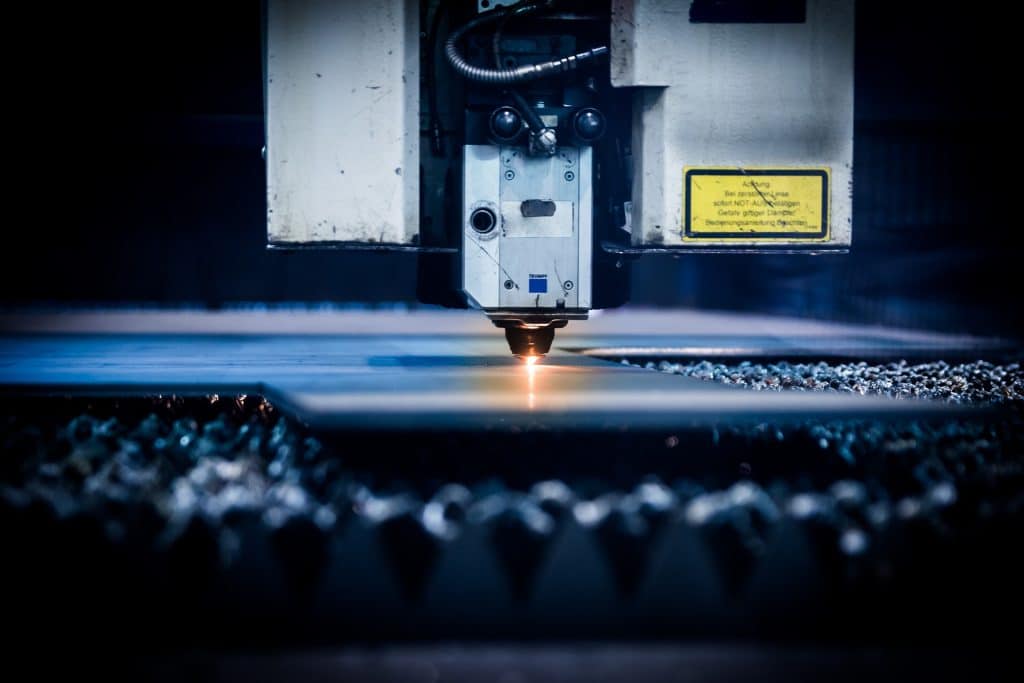
When it comes to precision and accuracy in metal cutting, laser cutting technology has become increasingly popular across various industries. Unlike conventional methods, laser cutting is a non-contact process that uses a highly focused laser beam to cut through different types of metals such as steel, copper, and aluminium.
The process relies on the principle of thermal fusion cutting, which involves melting the metal to create a narrow and precise cut. The laser beam is concentrated and focused through a lens to provide a high amount of energy per unit area, which is absorbed by the metal, causing it to melt and evaporate, leaving behind a clean and accurate cut.
The benefits of laser cutting are significant. It provides accurate and clean results and can produce intricate shapes and patterns that cannot be achieved with conventional methods. Laser cutting technology is widely used in many manufacturing industries to mass-produce products quickly and cost-effectively.
Small laser cutters are even available for hobbyists and those interested in artisanal work. Laser cutting technology has revolutionized the way people work with metal by providing quick, precise, and cost-effective solutions for producing high-quality products. Whether you need to cut mild steel, stainless steel, or aluminium plates, laser cutting is an efficient and reliable option.
Fibre Laser Cutting
The process of utilizing solid-state lasers to accurately and effectively cut metals is known as fibre laser cutting. Unlike other technologies, this technique uses optical fibres as the laser medium to pierce and melt metals. This allows for a higher power state and an intensification of the laser beam, enabling precision and efficiency.
The range of materials and thicknesses that can be cut with fibre laser machines depends on their capacity, with most machines capable of cutting stainless steel up to 10mm thick. Fibre laser cutters also come equipped with dual interchangeable platforms that facilitate the loading and unloading of materials, allowing for a fast cutting process while maintaining precision.
Maintenance of fibre laser cutters is also straightforward, with minimal part replacements and tune-ups required, reducing maintenance costs. Additionally, these machines use nitrogen in their cutting process, resulting in faster and less messy cutting. Fibre laser cutting is especially useful in cutting sheet metal, such as carbon steel, stainless steel, copper, brass, aluminium, and titanium. These lasers can cut through reflective materials, making them ideal for metal art and sculptures. The thickness of the material that can be cut depends on the machine’s power, with higher powered fibre laser machines capable of cutting up to 30mm of stainless steel and aluminium.
Oxy-Fuel or Flame Cutting
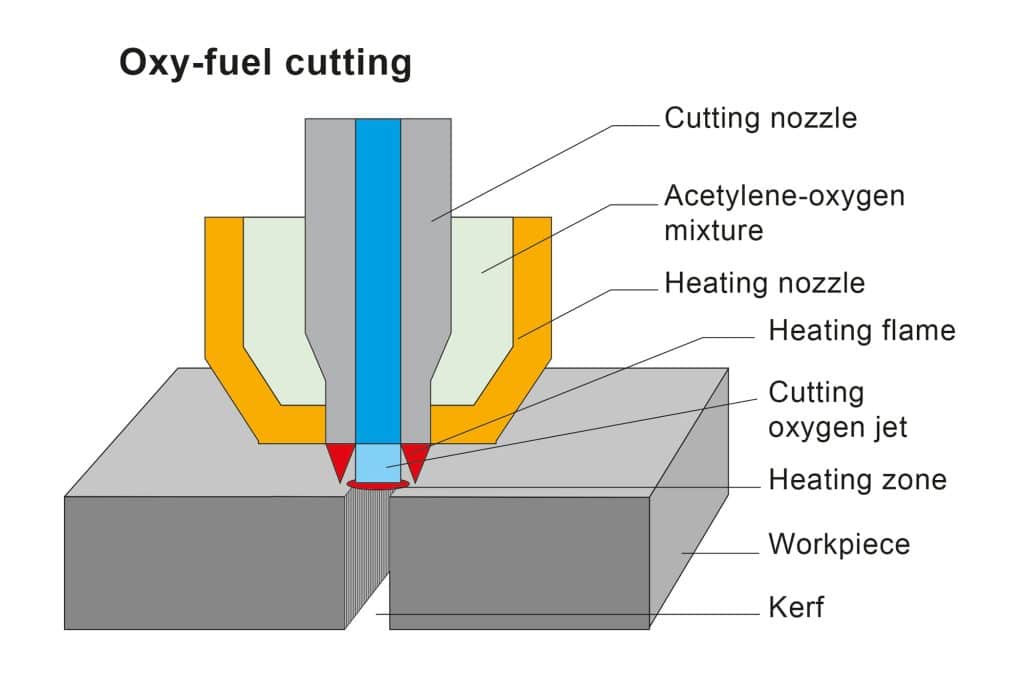
One of the most popular methods for cutting and shaping steel components is oxy-fuel or flame cutting. This thermal cutting process utilizes a combination of fuel gas and oxygen to create a high-temperature flame that melts the metal, which is then blown away by a jet of oxygen to create a clean cut.
Oxy-fuel cutting works on the principle of oxidation cutting, where the metal is burned in an oxygen-rich environment. The fuel gas, such as acetylene or propane, is mixed with oxygen to create a concentrated flame that melts the metal. The outer ring of jets preheats the surface, and the oxygen stream is directed to the area that needs to be cut. A reaction occurs, causing rapid oxidization of the steel, and the material is removed by the pressure of the gas.
Flame cutting is an efficient process that can be either manual or computerised. The oxy-fuel cutting technique uses a torch to allow the oxy-fuel gas flame to pass through in a concentrated amount. The process creates a clean cut by blowing away the molten metal and leaving a smooth surface.
This is commonly used for separating and shaping steel components. It is a highly efficient method that can be performed on a variety of thicknesses, making it a popular choice in many industries.
Plasma Cutting

Metal cutting has evolved over the years, and one of the modern techniques used is plasma cutting. It involves the use of an electric arc that passes through gas to create plasma. This plasma is then used to cut through different types of metals.
To create the plasma arc, an electric current is passed through a gas such as argon, nitrogen, oxygen or air, which is forced through a small orifice. The gas is ionized, and the high-temperature plasma arc that is formed is concentrated and focused, providing a high amount of energy per unit area.
Plasma cutting torches consist of a copper nozzle that constricts a stream of gas, allowing it to cut through the material. Oxygen and inert gas can also be used at high speeds to achieve the desired result. The hot plasma stream melts the metal, and the molten metal is blown away quickly. This process is effective and produces clean cuts similar to laser cutting. It is worth noting that while plasma cutting can be accurate, it may not provide the same level of precision as laser cutting. If high accuracy is required, laser cutting may be the better option. In conclusion, plasma cutting is a useful and efficient method for metal cutting, especially for thicker materials that are difficult to cut with other methods.
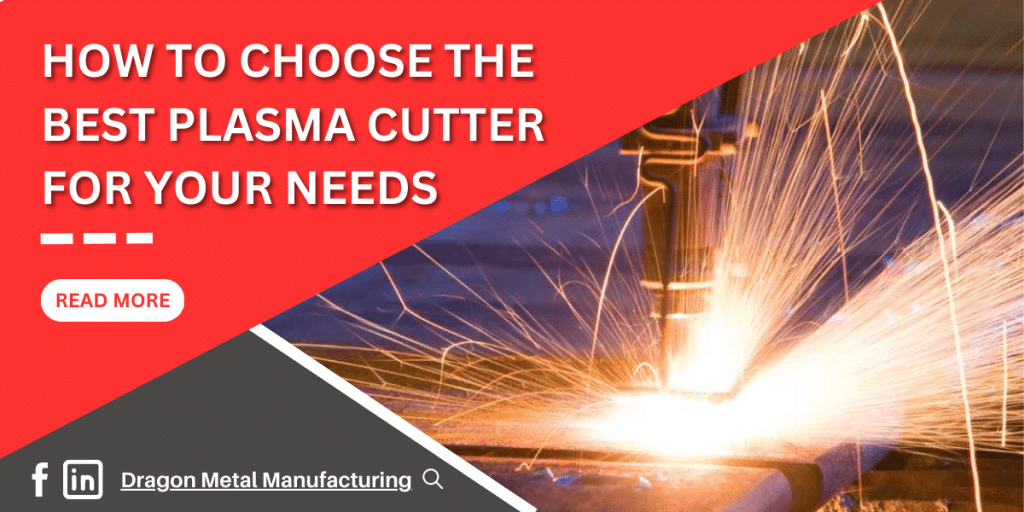
Waterjet Cutting
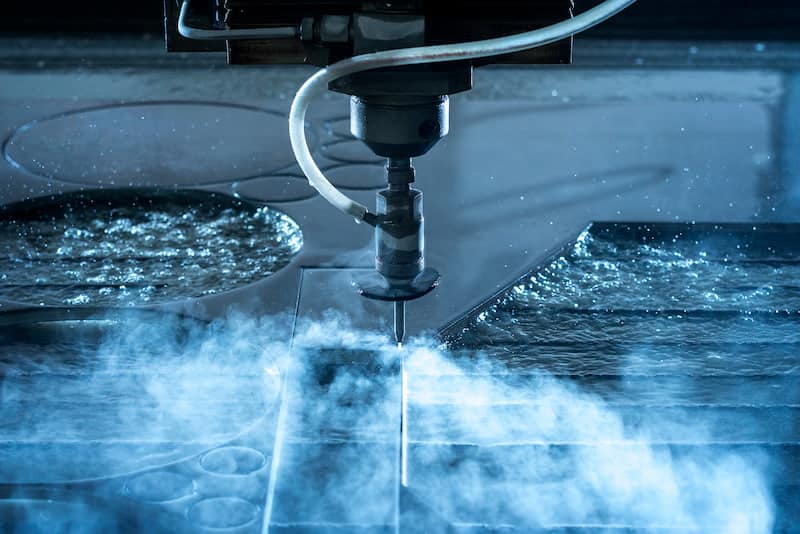
Cutting sensitive metals that cannot withstand high heat can be challenging without damaging the material’s surface. In such cases, waterjet cutting is an ideal method. This non-thermal cutting process uses a high-pressure jet of water mixed with abrasive materials such as garnet to cut through different types of metals.
Waterjet cutting relies on the principle of erosion cutting, where the high-pressure water jet erodes the metal surface to cut it. The water jet is highly concentrated and focused, providing a high amount of energy per unit area. This process can be used for both soft and hard materials and can cut thicknesses of over 100 mm.
The power of the waterjet cutter is remarkable, and it can cut through materials with ease. Compared to a power washer, the waterjet cutter provides 30 times more power. However, water jet cutting is only possible when the abrasive material used in the waterjet is softer than the material being cut. Furthermore, only a small percentage of the abrasive powder (usually garnet) actually contributes to the cutting action and the rest is ejected with the water and often fractures making it very problematic to recycle. By performing the waterjet cutting under water there is less splashing in the work area. Waterjet cutting mimics the natural effect of erosion on metal but at a much faster rate. This makes it an effective and efficient method for cutting metals that cannot withstand high heat.
Conclusion
The manufacturing industry heavily relies on a variety of metal cutting processes to create high-quality steel and metal products. Laser cutting, fibre laser cutting, oxy-fuel or flame cutting, plasma cutting, and waterjet cutting are just some examples of the many efficient methods available. When choosing the most appropriate method, manufacturers must consider material type, thickness, and precision requirements. Without these processes, it would be challenging to achieve the desired accuracy and smoothness in shape for the final product. Therefore, it’s crucial to have a suitable system that fits the metal manufacturing and cutting needs, ensuring the best possible outcome.
